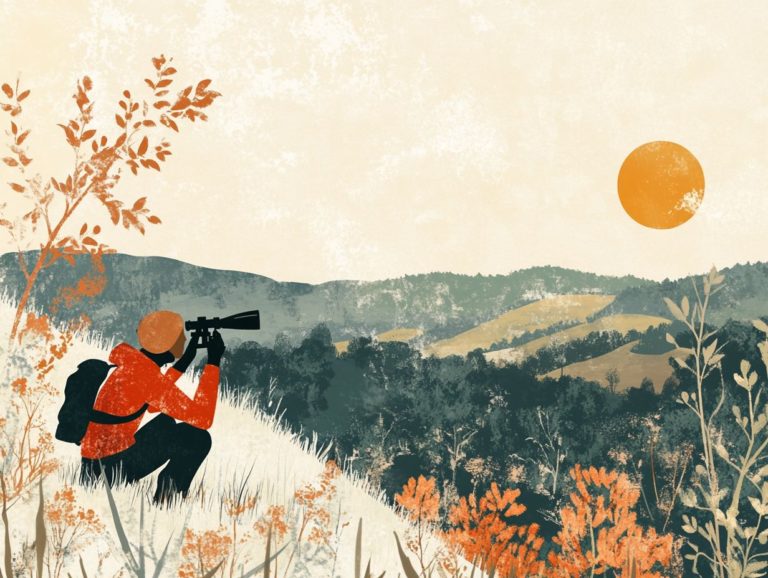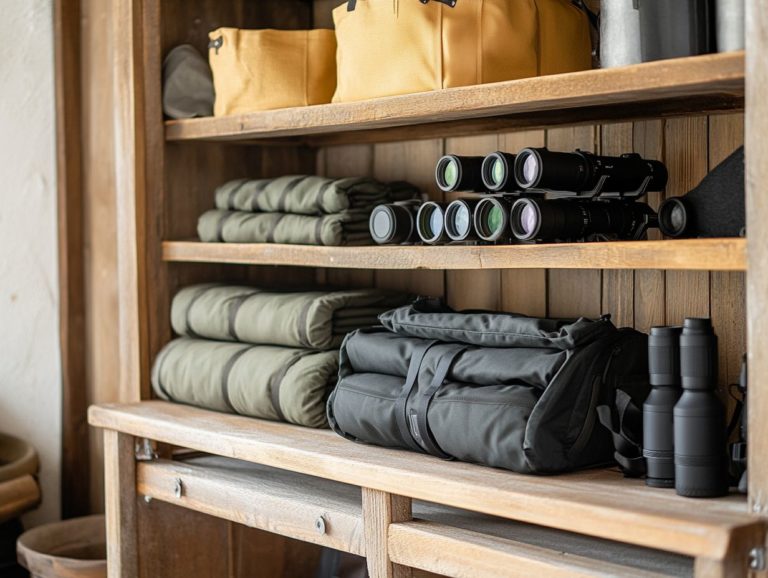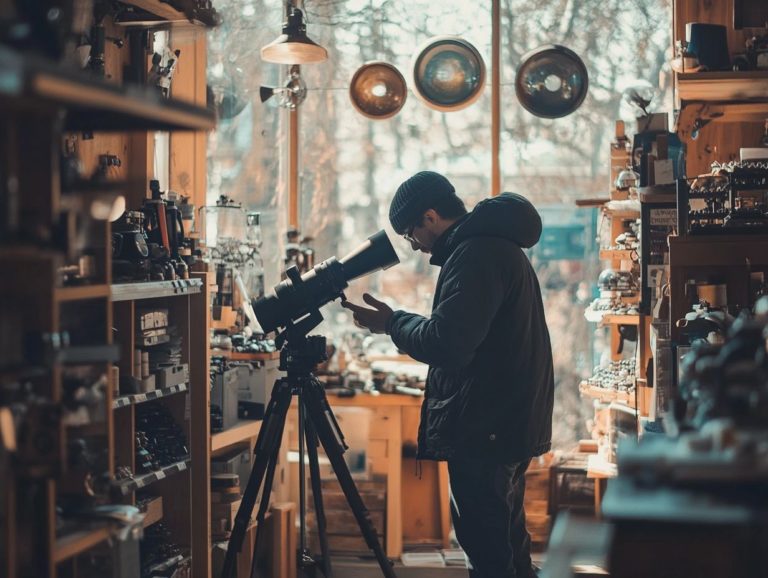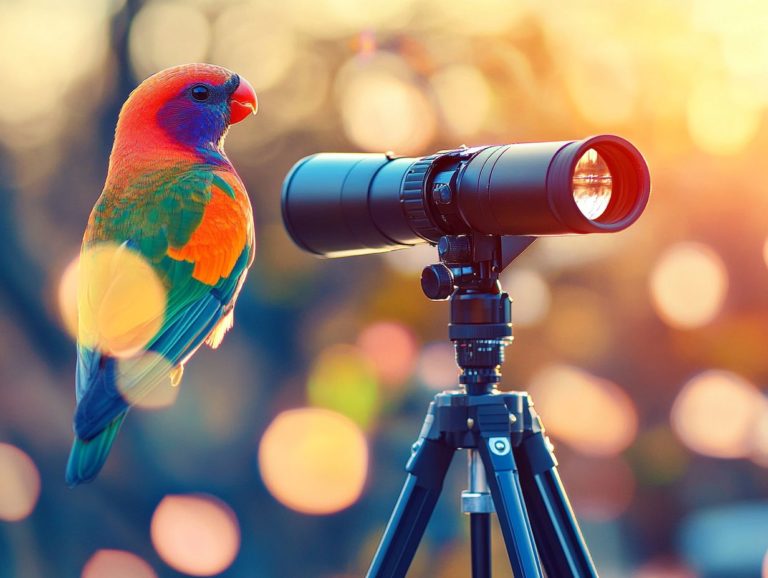5 Tips for Spotting Birds with a Scope
Bird watching becomes an extraordinary experience when you equip yourself with the right tools. Investing in a quality spotting scope is one of the best decisions you can make!
Uncover essential tips to elevate your bird watching adventures. Learn how to choose the perfect spotting scope and stabilize your view with a tripod. Explore the myriad benefits of using a scope, discover the different types available, and learn to sidestep common pitfalls.
Whether you re just starting out or have years of experience, these insights will enhance both your skills and enjoyment in the field!
Contents
- Key Takeaways:
- 1. Choose the Right Spotting Scope
- 2. Use a Tripod to Stabilize the Scope
- 3. Adjust the Focus and Magnification
- 4. Look for Movement and Listen for Calls
- 5. Take Your Time and Be Patient
- What Are the Benefits of Using a Spotting Scope for Bird Watching?
- What Are the Different Types of Spotting Scopes Available?
- How Can One Determine the Right Magnification and Objective Lens Size for Bird Watching?
- What Are the Common Mistakes to Avoid When Using a Spotting Scope for Bird Watching?
- What Are Some Tips for Maintaining and Cleaning a Spotting Scope?
- How Can One Improve Their Bird Watching Skills with a Spotting Scope?
- Frequently Asked Questions
- What are five essential tips for spotting birds with a scope?
- Why is it important to choose the right scope for bird spotting?
- How do I adjust the focus and magnification settings on my scope?
- Why should I use a tripod when spotting birds with a scope?
- Where is the best place to spot birds with a scope?
- Do I need to know how to use the reticle on my scope for bird spotting?
Key Takeaways:
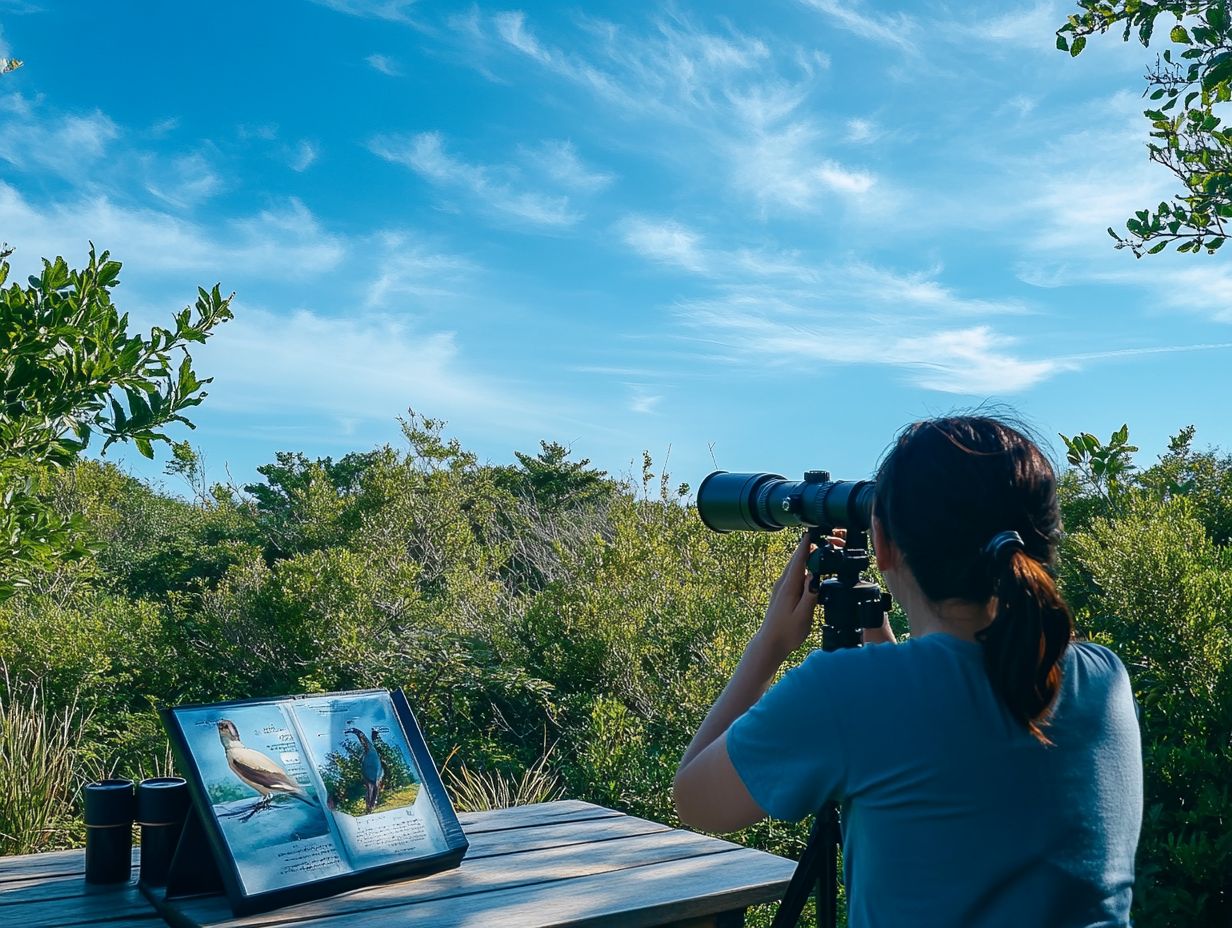
- Choose the right spotting scope to enhance your bird watching experience.
- Stabilize your scope with a tripod for steady and clear viewing.
- Adjust focus and magnification for better visibility of birds in their natural habitat.
1. Choose the Right Spotting Scope
Choosing the right spotting scope is vital for serious birders. It greatly affects your birdwatching experience by providing clarity and brightness. For more tips, check out this guide on how to use your spotting scope for birdwatching at night.
When considering a suitable model, you must evaluate various factors. Magnification levels can vary widely, impacting the detail you can discern from distant objects.
The optical quality, or how well the scope lets in light and shows clear images, and lens coatings are crucial for light transmission and clarity. This ensures you don t miss a thing!
The objective size is another key element, as it affects light-gathering capability, especially in low-light environments. Your choice between an angled or straight-bodied scope influences your comfort and usability during extended observation sessions.
If you re just starting out, entry-level options typically strike a balance between essential features and manageable complexity. Opt for lightweight designs with weatherproof features to enhance portability. This allows you to comfortably observe in various conditions.
2. Use a Tripod to Stabilize the Scope
Utilizing a tripod is essential for stabilizing your spotting scope. This ensures optimal image quality during your bird watching sessions. A steady view is crucial, especially at higher magnifications, enhancing your overall outdoor experience.
A stable platform clears up the image and significantly reduces eye strain during long hours of observation. When selecting a tripod, carefully consider the height. You want one that allows for comfortable viewing, so you won t have to stoop or stretch awkwardly.
There are various types of tripods suitable for bird watching, including:
- Lightweight travel tripods that are easy to carry.
- More robust options designed to withstand windy conditions.
Securing your spotting scope with a quick-release plate makes a big difference in minimizing vibrations. This further enhances the quality of your observations!
3. Adjust the Focus and Magnification
Adjusting the focus and magnification on your spotting scope is essential for achieving perfect sharpness and brightness in your images. This clarity allows you to accurately identify various bird species, whether observing seasonal migrations or local wildlife.
With the eyepiece in hand, you can fine-tune the level of detail, bringing distant subjects into stunning view. This elevates your spotting experience to a new level of enjoyment and insight.
In different birding scenarios like watching birds take flight or forage on the ground the zoom eyepiece offers flexibility in magnification. Zooming in captures intricate feather details, while zooming out broadens your field of view, making it easier to track those elusive, moving birds.
Here are a few tips to enhance your bird watching experience:
- Watch the focus ring as you adjust magnification to ensure it complements your subject’s distance.
- Regularly scan the area to spot active bird species.
By balancing focus with a wide perspective, you can enrich your bird watching adventures and capture breathtaking moments in nature!
4. Look for Movement and Listen for Calls
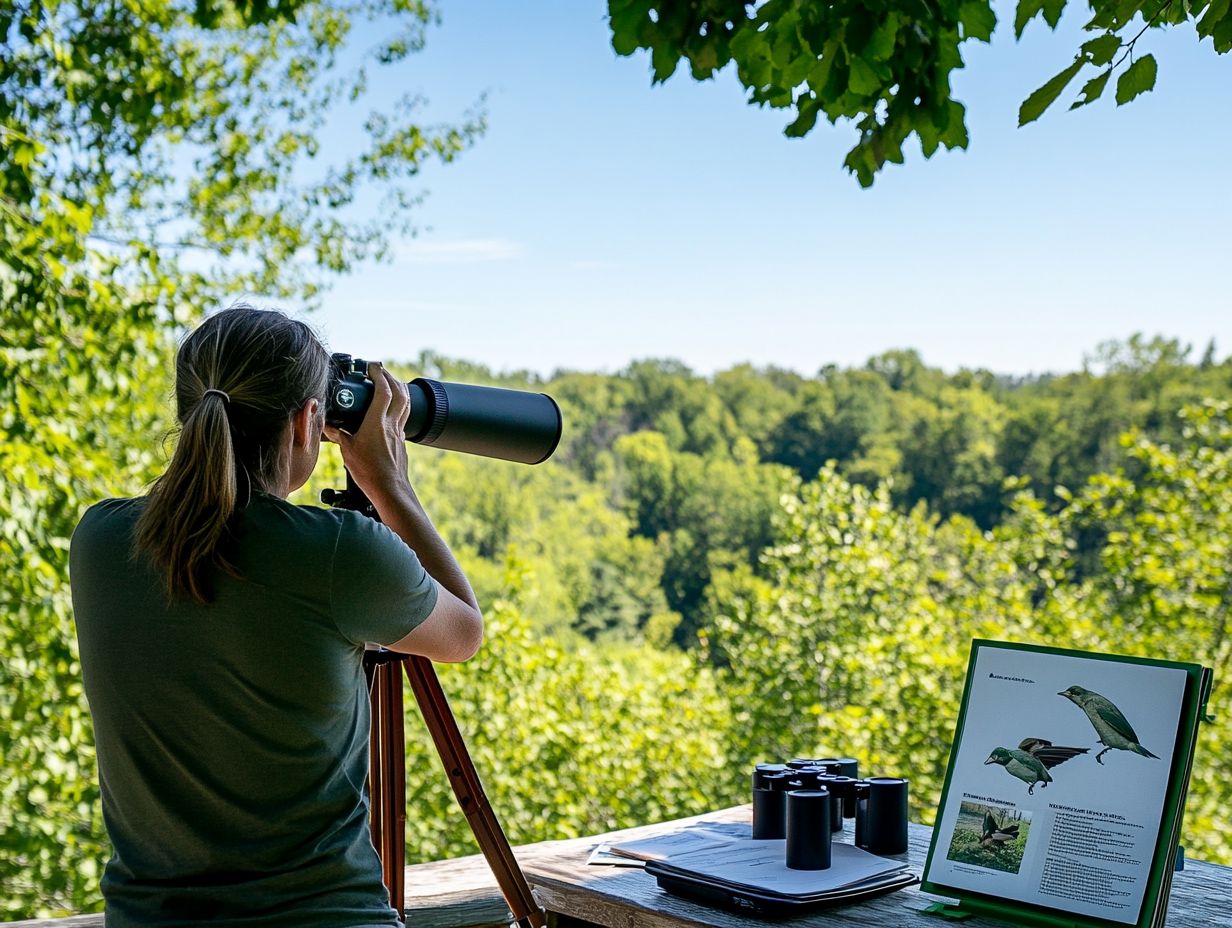
Being attentive to both movement and sounds is essential in birdwatching. Honing your bird identification skills boosts your chances of spotting elusive species during their seasonal migrations in popular birdwatching spots.
To truly excel in this delightful pursuit, consider employing various techniques. Observe the flicker of wings among the branches or listen intently for the unique calls that birds use to communicate. Using a spotting scope can elevate your experience immensely. To enhance your spotting scope experience, maximize its potential by adjusting the settings for clarity and focus, scanning the landscape slowly to catch glimpses of hidden activity.
Embracing the art of patience and maintaining sharp observation skills can transform an ordinary outing into an extraordinary adventure filled with unforgettable encounters in the avian world.
5. Take Your Time and Be Patient
Patience is truly a virtue in the art of birdwatching. Taking your time allows you to fully appreciate the exquisite beauty of nature while observing various birds. This ultimately leads to a more enriching wildlife viewing experience.
Embracing this quality lets you immerse yourself in the tranquil environment, where every rustle of leaves or distant chirp turns into a moment of discovery. Activities like journaling make this experience even better, allowing you to document your observations and reflect on your thoughts, deepening your connection with the surroundings.
Participating in local birding festivals presents an exceptional opportunity to meet fellow enthusiasts, share insights, and cultivate a sense of community. Through these interactions, you can form friendships that nurture a shared passion for avian life while honing your skills in observing and identifying the diverse species inhabiting their unique environments.
What Are the Benefits of Using a Spotting Scope for Bird Watching?
Using a spotting scope for birdwatching comes with a wealth of benefits that elevate your experience to new heights. The exceptional image quality enhances clarity, allowing you to spot and identify various bird species with remarkable detail. For more insights, check out this guide on how to choose a spotting scope for bird migration, which enriches your wildlife viewing adventures.
With improved magnification, these scopes let you effortlessly view distant subjects, making it easier to observe rare or elusive birds without causing any disturbance. Their superior light-gathering capabilities let you see clearly, even in low-light conditions like dawn or dusk. This combination amplifies the details in identification, highlighting plumage colors and subtle markings that standard binoculars might overlook.
Altogether, these advantages transform your birdwatching outings into genuine opportunities for discovery and a deeper appreciation of nature’s stunning beauty.
What Are the Different Types of Spotting Scopes Available?
Several types of spotting scopes are available, including angled body and straight body designs, each offering unique advantages. It s essential to choose the scope that aligns with your preferences and skill levels.
For example, angled body scopes are popular for extended viewing sessions. They provide a comfortable viewing angle, reducing strain on your neck and back during long hours of observation. On the other hand, straight body scopes are great for tracking moving wildlife, allowing for quicker adjustments without significant repositioning.
If you re just starting your birding journey, entry-level models with decent magnification and good light-gathering abilities are especially beneficial. These features enhance your overall experience while keeping things user-friendly, whether you’re casually observing birds in your backyard or embarking on serious expeditions into the wild.
How Can One Determine the Right Magnification and Objective Lens Size for Bird Watching?
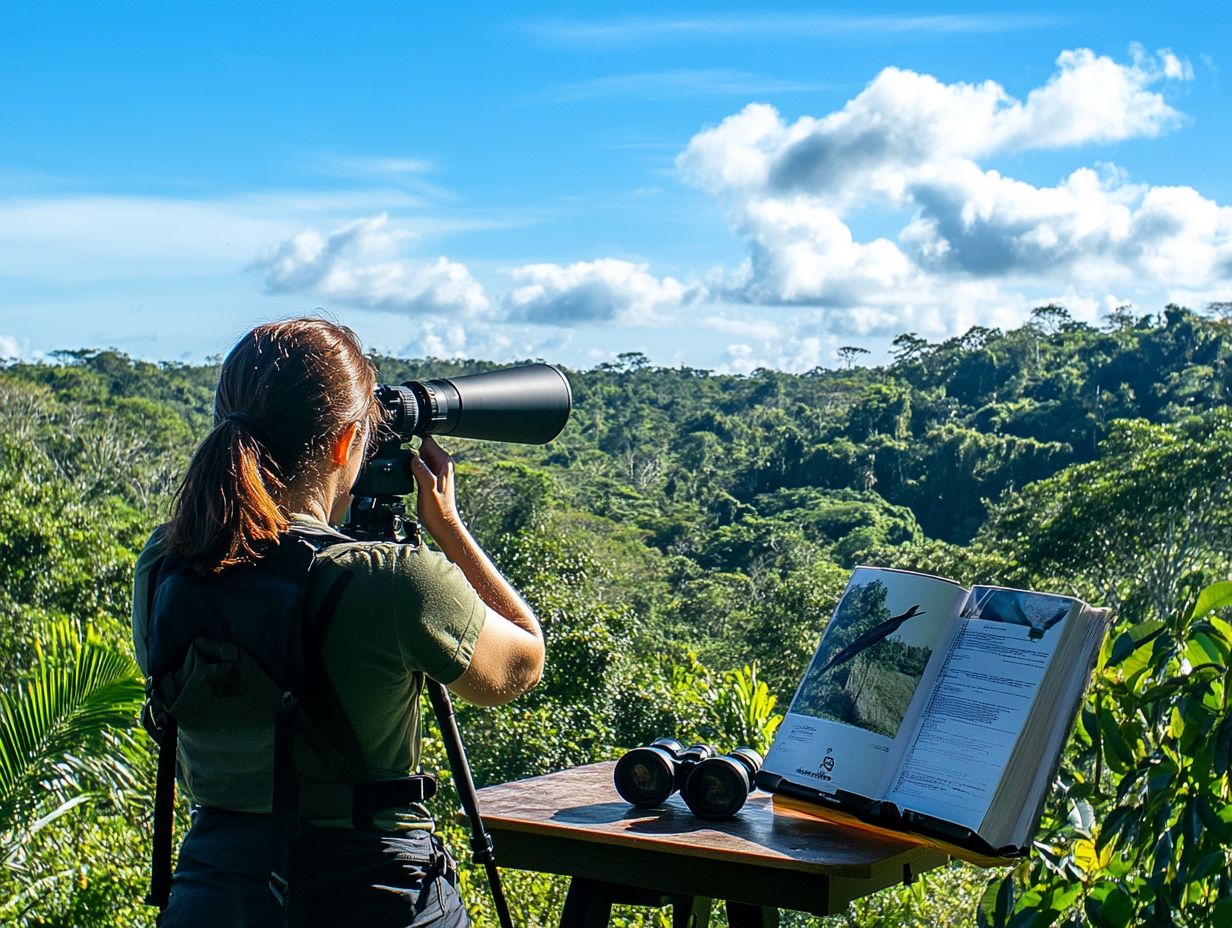
Determining the right magnification and objective lens size for bird watching is essential. It profoundly impacts the optical quality and image clarity of the sightings you ll encounter in the field.
When evaluating the ideal magnification, consider the type of birding you engage in, whether it s casual backyard watching or extensive field trips. A magnification of 8x to 10x is typically recommended for general use. This range strikes the perfect balance between detail and stability.
The size of the objective lens is equally important for its light-gathering capabilities. Larger lenses, around 42mm, deliver clearer images in low-light conditions, such as at dawn or dusk. This enhanced clarity significantly elevates your birdwatching experience, allowing you to appreciate the intricate details of plumage and behavior.
What Are the Common Mistakes to Avoid When Using a Spotting Scope for Bird Watching?
Common mistakes with a spotting scope can hurt your birdwatching experience. Errors like improper setup or neglecting adjustments often lead to disappointing observations. To enhance your experience, consider exploring the benefits of using spotting scopes for bird watching.
To fully savor the beauty of birdwatching, it s crucial to be aware of frequent pitfalls. If you skip using a tripod, you might battle shaky images that make it tough to capture fine details.
Incorrect magnification settings can steer your focus away from key elements, causing you to miss breathtaking views. Also, be mindful of image quality; overlooking this can transform a stunning sight into a blur.
To elevate your birdwatching adventure, consider these essential tips:
- Invest in a stable tripod
- Familiarize yourself with your device s settings before heading out
- Always check the optics for clarity
Tackle these common issues to sharpen your observation skills and enhance your enjoyment of this rewarding hobby.
What Are Some Tips for Maintaining and Cleaning a Spotting Scope?
Proper maintenance and cleaning of your spotting scope are essential for ensuring its longevity and optimal optical performance. This attention to detail allows you to enjoy crystal-clear views during your outdoor adventures.
Keep your scope in top shape! Regularly check for dust and debris on the lenses, as these can hinder clarity. Utilize a soft, lint-free cloth or a dedicated lens brush for this task; these tools are ideal for gently removing particles without risking scratches.
When your spotting scope isn t in use, store it in a protective case to safeguard it from environmental elements. Schedule regular maintenance checks to prevent potential issues and ensure your equipment is always ready for spontaneous birdwatching excursions.
How Can One Improve Their Bird Watching Skills with a Spotting Scope?
Improving your birdwatching skills with a spotting scope is an art that calls for practice and keen attention to detail. By embracing this advanced outdoor gear, you can learn how to use spotting scopes for nature observation, opening the door to better bird identification and a more immersive experience with nature.
To truly maximize the benefits of your spotting scope, cultivate a sense of patience. Take the time to observe the behaviors and characteristics of various bird species. For more tips on this, check out how to use bird watching scopes. This practice sharpens your observational skills and deepens your appreciation for the avian world.
Consider joining guided birdwatching events or workshops. These experiences can be incredibly enriching, as you’ll gain firsthand insights from seasoned birders who share invaluable tips and personal anecdotes. By exchanging knowledge in a group setting, you ll learn about bird calls, habitats, and optimal observation times.
Frequently Asked Questions
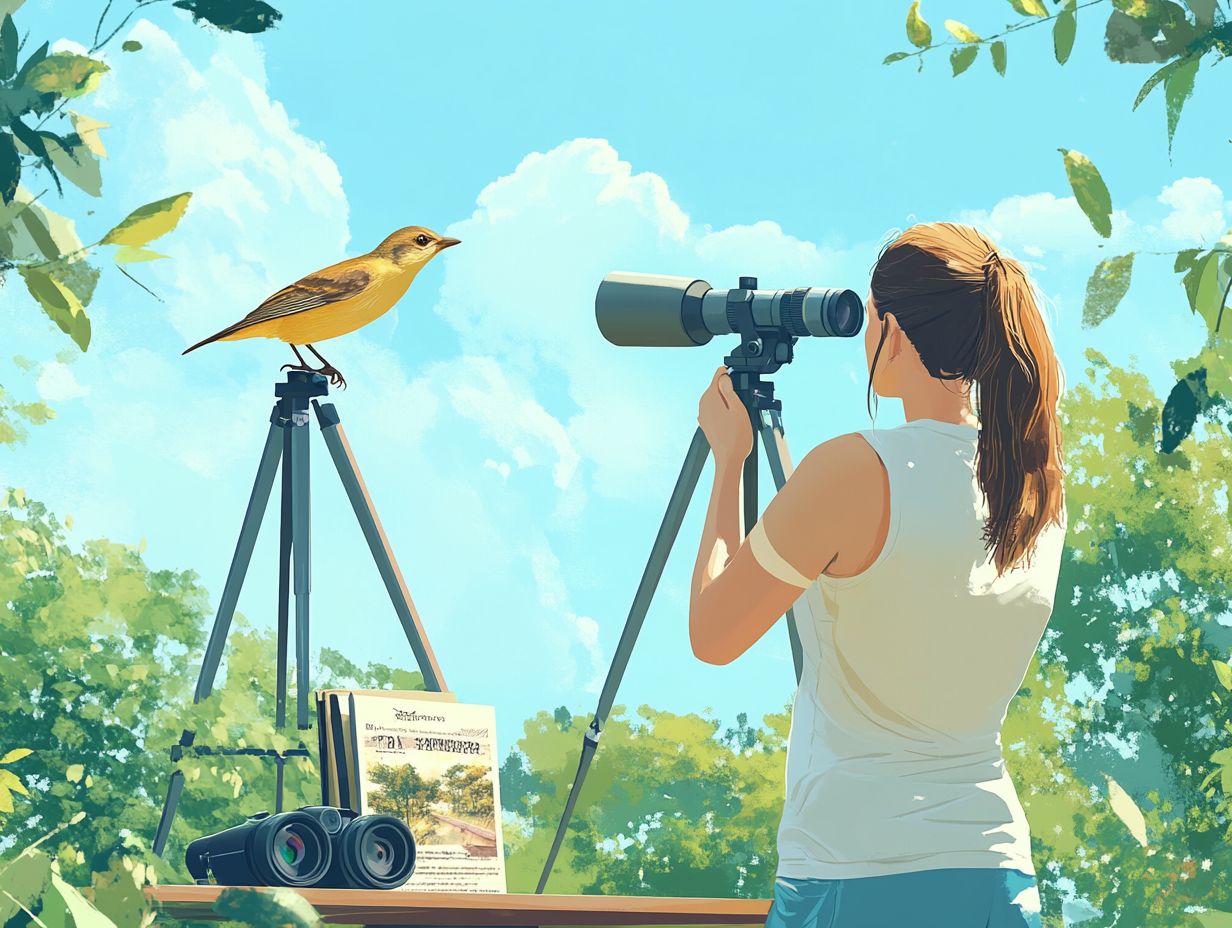
What are five essential tips for spotting birds with a scope?
Ready to enhance your bird spotting skills? Here are five essential tips:
1) Choose the right scope for your needs. 2) Adjust the focus and magnification. 3) Use a tripod for stability. 4) Scout open areas for birds. 5) Learn how to use your scope properly.
Why is it important to choose the right scope for bird spotting?
The right scope provides clear, accurate images, and spotting scope use tips for beginners can enhance this clarity, making spotting and identifying birds much easier.
How do I adjust the focus and magnification settings on my scope?
Each scope has its own design, so check the manufacturer’s instructions. Generally, adjust the focus with the focus ring and the magnification with the eyepiece or zoom ring.
Why should I use a tripod when spotting birds with a scope?
A tripod ensures stability, which reduces shakiness. This stability results in clearer images and less fatigue during extended observation.
Where is the best place to spot birds with a scope?
Look for open areas with a mix of trees and fields. These locations offer diverse habitats, such as wetlands or forests, which attract a variety of bird species.
Do I need to know how to use the reticle on my scope for bird spotting?
Understanding the reticle helps estimate distance and size. However, knowing it isn’t necessary for basic bird spotting.


